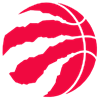While the initial loadout of the Big Board 1QB tournament is full, Underdog Fantasy kept the momentum going in their NFL best ball section by launching the Superflex variation of the tournament, simply titled the Big Board: Superflex. The $10 contest is filling up quickly, so if you want to draft some superflex best ball teams you'll need to be reasonably punctual about it.
The Superflex detail is just one notable change in this format. The other is that rather than 3WR, the format starts 2WR in addition to 1QB/2RB/1TE/1Flex/1Superflex. The superflex spot opens one floodgate of change relative to the past Underdog NFL ADP, and the WR change springs another puncture somewhere else. It makes for a lively, dynamic terrain from draft to draft and introduces some curveballs drafters might not be used to. Just like the 1QB Big Board contest, the draft runs 20 rounds.
Sign up for Underdog to receive a free 6-month subscription to RotoWire and first deposit match up to $100 with promo code RWNFL. Claim this special offer now at https://play.underdogfantasy.com/pc-MyVn4cbt6l.
To be transparent, Superflex is new to me. I don't really do much of it at all, and it's taking me some time to calibrate to the new, different markets relative to 1QB drafting. After doing a handful of drafts, though, I think there are certain general points that should be safe to say.
-The top 10 quarterbacks are justifiable first-round picks, and the first seven quarterbacks are almost mandatory top-seven
While the initial loadout of the Big Board 1QB tournament is full, Underdog Fantasy kept the momentum going in their NFL best ball section by launching the Superflex variation of the tournament, simply titled the Big Board: Superflex. The $10 contest is filling up quickly, so if you want to draft some superflex best ball teams you'll need to be reasonably punctual about it.
The Superflex detail is just one notable change in this format. The other is that rather than 3WR, the format starts 2WR in addition to 1QB/2RB/1TE/1Flex/1Superflex. The superflex spot opens one floodgate of change relative to the past Underdog NFL ADP, and the WR change springs another puncture somewhere else. It makes for a lively, dynamic terrain from draft to draft and introduces some curveballs drafters might not be used to. Just like the 1QB Big Board contest, the draft runs 20 rounds.
Sign up for Underdog to receive a free 6-month subscription to RotoWire and first deposit match up to $100 with promo code RWNFL. Claim this special offer now at https://play.underdogfantasy.com/pc-MyVn4cbt6l.
To be transparent, Superflex is new to me. I don't really do much of it at all, and it's taking me some time to calibrate to the new, different markets relative to 1QB drafting. After doing a handful of drafts, though, I think there are certain general points that should be safe to say.
-The top 10 quarterbacks are justifiable first-round picks, and the first seven quarterbacks are almost mandatory top-seven picks
The intense quarterback scarcity is real in superflex, and as the ADP implies there's an almost indisputable need to pick a quarterback if you have one of the first seven slots or so. I'm somewhat arbitrarily making Lamar Jackson (9.3 ADP) the cutoff for that after QB6 Justin Herbert (6.5 ADP), though right now Trevor Lawrence (8.2) is higher in the ADP than Jackson. I'm a big fan of Lawrence and like his chances of making the leap to the 5,000-yard/30-TD upside offered by Herbert et al, but there's arguably reason to give a greater benefit of the doubt to quarterbacks who have already done it. Or in the cases of Jackson and Justin Fields (4.5 ADP), quarterbacks who have 40-point upside on the basis of running ability.
Lawrence, Deshaun Watson (12.2 ADP) and Dak Prescott (13.9 ADP) don't quite qualify for either category, but they've come close enough previously to make them viable candidates to do so in the future. I think that alone makes them justifiable selections from the eighth pick onward, just not as obviously correct as the teams slotted in the top seven would be to take quarterbacks. If further justification is needed then I'd say they're reasonable picks because if they aren't then the next chance you'll have to take a quarterback will be picks 32 through 35, where the ADP lines up nearest to Aaron Rodgers (27.7 ADP), Jared Goff (29.3 ADP), Geno Smith (32.7 ADP), Russell Wilson (36.3 ADP) and Derek Carr (41.0 ADP). Perhaps someone like Lawrence, Watson or Prescott might be a slightly bitter pill to take after seeing quarterbacks who go multiple rounds higher in 1QB go just one or two picks before yours, but will it get much better if your recourse is running one of those Rodgers → Carr guys or worse as your QB1? Maybe, I'm agnostic though. Pretty much any build theory is justified up to a certain point.
-4QB builds are probably reasonable in some situations, but 3QB might be the ideal setup
You'll obviously need a decent point total at quarterback to place well in a superflex league, so whatever approach you take at quarterback has to theorize around that reality. If your top two or three quarterbacks don't cumulatively carry the possibility of ranking in at least the top half of league quarterback scoring then maybe that would be a scenario where taking a fourth quarterback makes the most sense. The more zero-QB a roster, the more reasonable the expense of a QB4, in other words. If you have killers at your top two quarterback spots, by contrast, you might want to stop at three.
There's a case too for going with just two quarterbacks – theoretically the exchange of fragility at quarterback becoming a benefit toward RB/WR/TE – and I think that would apply more reliably in an 18-round setup. Since Underdog implemented a 20-round format, though, I think in 1QB leagues it made more sense to go 3QB than it did in prior years. Similarly, I think a third quarterback pick is probably the ideal way to play it not just for the increased insurance and weekly upside, but because with 20 rounds it's easier to find the RB/WR/TE utility that you'd normally pursue by forgoing the additional quarterback pick. You can only start two quarterbacks each week so a third in that scenario is one less live bullet, but if you have two starting then you can only start three running backs or three receivers, too. A ninth WR in a 20-round format might not be worth as much as an eighth WR was in an 18-round format if you aren't raising the number of starting spots in accordance with the number of rounds.
-RB emphasis is arguably greater than in the 1QB Big Board, at the expense of WR
Because the Big Board: Superflex contest is 2WR rather than 3WR there's arguably a slight tilt in value toward RB at the expense of WR. The original, 1QB Big Board had 3WR in addition to the flex, so the introduction of the Superflex slot was at the expense of the third WR. This could arguably raise the share of consideration owed to TE too, but as the lowest-scoring position and a position with only one starting spot I would guess the gains pretty much just go to RB.
I think there was always a good case to aim for three killer running backs in addition to solid depth in the 1QB Big Board, so if RB gains ground on WR in Superflex then I'll only be more inclined. You can swarm spike weeks at wide receiver no matter how injuries hit the position in a given year, but if top RBs stay healthy you can't match their ceiling with a swarm of handcuff types. Players like McCaffrey, Taylor, Chubb etc. can go well past 30 fantasy points in their spike weeks, but their handcuff definitely does not. The entire theory of Zero RB requires attrition among RB talent to create room for the cheaper, later-round RB targets to have whatever opportunity they eventually seize. It doesn't truly posit that any running back is as good as another, it just recognizes the importance of opportunity and questions whether the utility of early-round RB talent outpaces the durability risk incurred at the price. If I don't have a league of 11 other drafters running out 4WR squads every week then it's less likely I get bit for going cheaper at wide receiver. The replacement level at receiver goes up, and fewer live bullets are required to compete.




































